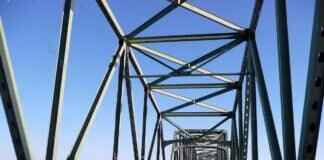This article explores the key indicators that signal when it’s time to replace your windshield wipers, ensuring optimal visibility and safety while driving. Windshield wipers are a crucial component of vehicle safety, particularly during adverse weather conditions. Understanding when to replace them can significantly enhance your driving experience.
What Are the Common Signs of Worn Windshield Wipers?
Recognizing the common signs that indicate your windshield wipers need replacement is essential for maintaining clear visibility. Some of the most noticeable signs include:
- Streaking: If your wipers leave streaks on the windshield, it’s a clear indication that the rubber is worn out.
- Skipping: Wipers that skip across the glass instead of making smooth contact can compromise visibility.
- Chattering: A chattering sound while the wipers are in motion indicates that the blades are not making proper contact.
- Crumbling or Cracks: Inspect the rubber for any visible damage; if it’s crumbling or cracked, it’s time for a change.
How Often Should You Replace Your Windshield Wipers?
It’s generally recommended to replace your windshield wipers every 6 to 12 months. However, this can vary based on several factors, including climate and usage. Regular checks can help you stay ahead of any potential issues.
What Factors Affect Wiper Lifespan?
Several environmental and usage factors can influence how long your windshield wipers last:
- Climate Conditions: Extreme temperatures can deteriorate wiper materials, leading to a shorter lifespan.
- Usage Frequency: Frequent use in heavy rain or snow accelerates wear and tear.
How Do Weather Conditions Impact Wiper Durability?
Extreme weather conditions can significantly impact the durability of your wipers. For instance, excessive heat can cause the rubber to harden and crack, while freezing temperatures can make the rubber brittle, reducing its effectiveness.
Does Frequent Use Shorten Wiper Life?
Yes, regular use of windshield wipers in challenging weather can lead to accelerated wear. If you frequently drive in heavy rain or snow, consider inspecting your wipers more often.
What Are the Performance Indicators of Worn Wipers?
In addition to the visual signs of wear, performance indicators can help determine when your wipers are no longer effective:
- Noise: Any unusual sounds during operation can signify a problem.
- Inconsistent Cleaning: If the wipers do not clear the windshield thoroughly, it’s time for a replacement.
What Are the Benefits of Regular Wiper Replacement?
Understanding the advantages of timely windshield wiper replacement can enhance your driving experience:
- Improved Visibility: New windshield wipers provide clearer visibility by effectively clearing rain, snow, and debris.
- Cost-Effective: Investing in regular replacements can prevent potential damage to your vehicle’s windshield, saving on costly repairs.
How Do New Wipers Improve Visibility?
New windshield wipers are designed to provide a cleaner swipe across the windshield, ensuring that you have a clear view of the road ahead. This is crucial for safe driving, especially during inclement weather.
Can Regular Replacement Save Money in the Long Run?
Yes, by replacing your windshield wipers regularly, you can avoid the risk of damaging your windshield. A damaged windshield can lead to expensive repairs, making regular wiper replacement a wise investment.

What Are the Common Signs of Worn Windshield Wipers?
When it comes to ensuring a safe driving experience, windshield wipers play a critical role, particularly in adverse weather conditions. Understanding the common signs that indicate your windshield wipers need replacement is essential for maintaining clear visibility. Here, we delve into the key indicators that suggest it’s time to consider a replacement.
- Streaking: If your wipers leave streaks across the windshield, it’s a clear sign that the rubber blades are worn out. This can obstruct your view, especially in heavy rain.
- Skipping: Wipers that skip or chatter when in use indicate that they are not making proper contact with the glass. This can be due to a loss of flexibility in the rubber or a bent wiper arm.
- Cracking or Splitting: Inspect your wiper blades for any visible cracks or splits. If you notice any damage, it’s time for a replacement, as these imperfections can lead to decreased performance.
- Noise: Unusual sounds, such as squeaking or grinding, can signal that the wipers are struggling to operate effectively. This could be due to debris stuck on the blades or the blades themselves being worn out.
- Reduced Visibility: If you find yourself having to rely on your windshield washers more often because the wipers aren’t clearing the glass effectively, it’s time to replace them. Clear visibility is crucial for safe driving.
Being aware of these signs can help you take proactive measures to ensure your visibility is never compromised. Regular inspections of your wipers, especially before the rainy season, can prevent dangerous situations on the road.
Moreover, the lifespan of windshield wipers can vary significantly based on several factors. For instance, extreme weather conditions, such as intense heat or freezing temperatures, can accelerate wear and tear. Additionally, frequent usage, particularly during heavy rains or snow, can also lead to a quicker decline in wiper performance.
It is advisable to replace your windshield wipers at least once a year, but this can vary based on the signs mentioned above. Regular maintenance not only enhances your driving experience but also ensures your safety on the road.
In conclusion, understanding the common signs of worn windshield wipers and monitoring their condition can significantly improve your driving safety. Always prioritize your visibility and replace your wipers at the first sign of wear.

How Often Should You Replace Your Windshield Wipers?
When it comes to maintaining your vehicle, one of the most critical yet often overlooked components is the windshield wipers. Knowing how often to replace your windshield wipers is essential for ensuring optimal performance and safety while driving. Worn-out wipers can lead to reduced visibility, especially during inclement weather, which can significantly increase the risk of accidents.
Windshield wipers are designed to clear rain, snow, and debris from your windshield, but they don’t last indefinitely. Over time, the rubber blades can become cracked, brittle, or worn, leading to ineffective performance. Regular replacement not only maintains visibility but also enhances your overall driving experience.
Experts recommend replacing windshield wipers every 6 to 12 months, depending on various factors such as climate, usage, and the quality of the wipers themselves. For instance, if you live in an area with extreme weather conditions, you may need to replace your wipers more frequently.
- Climate Conditions: Hot and sunny climates can cause the rubber to degrade faster, while cold temperatures can lead to brittleness.
- Usage Frequency: Frequent use, especially in heavy rain or snow, can accelerate wear and tear.
- Quality of Wipers: Higher-quality wipers may last longer than cheaper alternatives, making them a worthwhile investment.
Several indicators can help you determine if your windshield wipers need replacing:
- Streaking: If your wipers leave streaks on the windshield, it’s a sign that they are not making proper contact.
- Skipping: If the wipers skip across the glass instead of gliding smoothly, they may need to be replaced.
- Noise: Squeaking or chattering noises when the wipers are in use indicate wear.
- Visible Damage: Cracks, tears, or missing pieces are clear signs that replacement is necessary.
Replacing your windshield wipers regularly has several benefits:
- Improved Visibility: New wipers provide a clear line of sight, which is crucial for safe driving.
- Cost-Effective: Regular replacements can prevent damage to your windshield, saving you money on repairs.
- Enhanced Safety: Clear visibility reduces the likelihood of accidents, especially during adverse weather conditions.
Yes, there are several ways to extend the lifespan of your windshield wipers:
- Clean the Blades: Regularly wipe the rubber blades with a damp cloth to remove dirt and debris.
- Avoid Using Wipers on Dry Glass: This can cause unnecessary wear on the blades.
- Park in the Shade: Keeping your vehicle out of direct sunlight can help prevent the rubber from degrading.
By understanding the importance of timely windshield wiper replacement and recognizing the signs of wear, you can ensure a safer driving experience. Regular maintenance not only protects your visibility but also contributes to the overall longevity of your vehicle.
What Factors Affect Wiper Lifespan?
When it comes to maintaining your vehicle, understanding the factors that affect windshield wiper lifespan is crucial. Windshield wipers are essential for ensuring clear visibility during various weather conditions, but their longevity can be influenced by a variety of environmental and usage factors. In this section, we will delve into these elements to help you better care for your wipers.
The climate in which you live plays a significant role in determining how long your windshield wipers will last. For instance:
- Hot and Dry Climates: Prolonged exposure to intense sunlight can cause the rubber material of the wiper blades to dry out and crack. This deterioration can lead to reduced effectiveness and a need for replacement.
- Cold and Wet Climates: In colder regions, wipers may freeze to the windshield, causing them to tear when activated. Additionally, frequent snow and ice can wear down the rubber more quickly.
- Humid Environments: High humidity levels can lead to mold and mildew growth on wiper blades, which can also affect their performance.
Another critical factor influencing wiper lifespan is how often they are used. The more frequently you use your wipers, the quicker they will wear out. Consider the following:
- Frequent Rain or Snow: If you live in an area that experiences heavy rainfall or snowfall, your wipers will be in constant use, leading to accelerated wear.
- Regular Use for Cleaning: Some drivers use their wipers to clear off dirt and debris even when it’s not raining. While this can keep your windshield clean, it can also contribute to faster degradation of the wiper blades.
Proper maintenance can significantly extend the life of your windshield wipers. Here are some tips:
- Regular Cleaning: Keeping the blades clean can prevent dirt and debris from causing unnecessary wear. Use a soft cloth and a mild cleaner to wipe the blades regularly.
- Seasonal Checks: Inspect your wipers seasonally to catch any signs of wear and replace them before they become ineffective.
- Use of Windshield Washer Fluid: Using washer fluid instead of water can help keep your wipers in better condition by reducing the buildup of grime.
Recognizing the signs of wiper wear can help you replace them before they become a safety hazard:
- Streaking: If your wipers leave streaks on the windshield, it’s a clear sign that they need to be replaced.
- Skipping: Wipers that skip or chatter across the glass are no longer making proper contact and should be inspected.
- Cracks or Tears: Visually inspect the blades for any visible damage. If you see cracks or tears, it’s time for new wipers.
By understanding these factors, you can take proactive steps to maintain your windshield wipers, ensuring they provide optimal performance when you need them most. Regular inspections and timely replacements can significantly enhance your driving safety and visibility.
How Do Weather Conditions Impact Wiper Durability?
When it comes to ensuring a safe driving experience, the condition of your windshield wipers is often overlooked. One critical factor that affects their performance is the weather. Understanding how different weather conditions impact wiper durability is essential for maintaining optimal visibility on the road.
In regions where temperatures soar, the heat can have a significant impact on windshield wipers. High temperatures can cause the rubber material of the wipers to dry out and crack, leading to decreased flexibility and effectiveness. This deterioration can result in:
- Reduced Contact: As the rubber hardens, it may not make proper contact with the windshield, causing streaks and missed spots.
- Increased Noise: Worn-out wipers can produce squeaking or chattering sounds, indicating that they are no longer functioning properly.
- Shortened Lifespan: Exposure to extreme heat can significantly reduce the lifespan of your wipers, necessitating more frequent replacements.
Conversely, in colder climates, windshield wipers face their own set of challenges. Freezing temperatures can cause the rubber to harden, which can lead to similar issues as those caused by heat. In addition, ice and snow accumulation can:
- Prevent Movement: Wipers may become stuck to the windshield, making it difficult to clear snow or ice effectively.
- Cause Damage: Trying to operate frozen wipers can lead to bending or breaking the wiper arm, resulting in costly repairs.
- Accelerate Wear: The constant stress of scraping against ice can wear down the rubber more quickly than normal conditions.
While rain is essential for driving safety, high humidity can also affect wiper performance. Prolonged exposure to moisture can lead to:
- Mold and Mildew: Continuous wet conditions can foster mold growth on wipers, which can compromise their effectiveness.
- Rubber Degradation: Humidity can cause the rubber to break down over time, leading to cracks and reduced functionality.
Many drivers are unaware that prolonged sun exposure can also degrade wiper materials. UV rays can lead to:
- Fading and Cracking: The sun can cause the rubber to fade and crack, reducing its ability to wipe effectively.
- Loss of Elasticity: UV damage can lead to a loss of elasticity, making the wipers less effective at conforming to the windshield’s shape.
To maximize the lifespan of your windshield wipers and ensure they perform effectively, consider the following tips:
- Regular Inspections: Check your wipers every few months for signs of wear and tear.
- Use a Wiper Cover: In extreme weather conditions, using a cover can protect your wipers from damage.
- Choose Quality Products: Invest in high-quality wipers designed to withstand various weather conditions.
In summary, understanding how weather conditions impact wiper durability is crucial for maintaining safety while driving. By being proactive and attentive to the signs of wear, you can ensure that your windshield wipers remain effective, regardless of the climate.
Does Frequent Use Shorten Wiper Life?
Windshield wipers are essential for maintaining clear visibility during adverse weather conditions, but their frequent use can lead to accelerated wear and tear. Understanding how regular use impacts the lifespan of your wipers is critical for ensuring safety on the road.
When windshield wipers are used consistently in heavy rain, snow, or sleet, they are subjected to increased friction and stress. This constant movement can cause the rubber blades to degrade more quickly than if they were used less frequently. In fact, it is not uncommon for drivers who live in areas with harsh weather conditions to find themselves replacing their wipers more often than those in milder climates.
Another factor to consider is the quality of the wiper blades. High-quality wipers may withstand frequent use better than cheaper alternatives. Investing in premium wipers can lead to longer-lasting performance, even with regular use. However, even the best wipers will eventually show signs of wear, especially when used extensively in challenging conditions.
Additionally, the material composition of the wiper blades plays a significant role in their durability. Rubber blades are more susceptible to cracking and splitting when exposed to extreme temperatures and constant use. In contrast, silicone blades tend to last longer and provide better performance in adverse conditions.
Here are some common signs that your windshield wipers may be wearing out due to frequent use:
- Streaking: If your wipers leave streaks or smudges on your windshield, it may indicate that the rubber is worn down.
- Skipping: Wipers that skip or jump across the windshield are often a sign of wear and should be replaced immediately.
- Noisy Operation: If your wipers are making unusual noises, it could be due to damaged blades that need to be replaced.
To prolong the life of your windshield wipers, consider the following maintenance tips:
- Regular Cleaning: Keep your wipers clean to prevent dirt and debris from causing additional wear.
- Inspect Wipers Frequently: Regularly check for signs of wear and replace them as necessary.
- Use Wipers Appropriately: Avoid using wipers on dry windshields or in conditions where they are not needed, as this can lead to unnecessary wear.
In conclusion, while frequent use of windshield wipers in heavy rain or snow is often necessary for safety, it does contribute to a shortened lifespan. By understanding the factors that affect wiper durability and implementing proper maintenance practices, drivers can ensure their windshield wipers remain effective for as long as possible. Investing in quality wipers and paying attention to their condition can enhance visibility and safety on the road.
What Are the Performance Indicators of Worn Wipers?
When it comes to ensuring safe driving, the condition of your windshield wipers plays a crucial role. Worn-out wipers can severely impact visibility, especially during adverse weather conditions. Therefore, recognizing the performance indicators of worn wipers is essential for maintaining safety on the road.
Understanding the performance indicators of windshield wipers can help you identify when they are no longer effective. Here are some common signs to watch for:
- Streaking: If your wipers leave streaks across the windshield, it indicates that the rubber blades have worn down and are not making proper contact with the glass.
- Skipping: When wipers skip across the surface instead of gliding smoothly, it is a clear sign of deterioration, often caused by hardened rubber or debris stuck in the wiper mechanism.
- Chattering: If you hear a chattering noise while the wipers are in use, this may indicate that the blades are not fitting properly against the windshield, leading to ineffective wiping.
- Cracking or Splitting: Visually inspecting the rubber blades for cracks or splits is essential. Damaged rubber can lead to decreased performance and should be replaced immediately.
- Decreased Visibility: If you notice that your visibility is compromised during rain or snow, it may be time to replace your wipers, even if they don’t show obvious signs of wear.
Being aware of these indicators can help you take timely action, ensuring that your wipers function effectively when you need them the most. Regular inspections can prevent unexpected issues during critical driving conditions.
Neglecting to replace worn wipers can lead to serious safety risks. Poor visibility can increase the likelihood of accidents, especially during heavy rain or snow. Furthermore, using ineffective wipers can cause additional wear on your windshield, potentially leading to costly repairs. By addressing performance issues promptly, you not only enhance your safety but also protect your vehicle in the long run.
To prolong the life of your windshield wipers, consider the following maintenance tips:
- Regular Cleaning: Keep the blades clean from dirt and debris to ensure optimal performance.
- Inspect for Damage: Periodically check the wiper blades for any signs of wear or damage.
- Use Appropriate Wiper Fluid: Using the right windshield washer fluid can help maintain the condition of your wipers.
- Replace When Necessary: Follow the manufacturer’s recommendations for replacement frequency, typically every 6 to 12 months, depending on usage and environmental conditions.
By following these tips, you can enhance the effectiveness of your windshield wipers and ensure safer driving conditions.

What Are the Benefits of Regular Wiper Replacement?
In the realm of vehicle maintenance, regular windshield wiper replacement is often overlooked, yet it plays a crucial role in ensuring safety and enhancing the overall driving experience. By understanding the benefits of maintaining your windshield wipers, you can significantly improve visibility and prevent potential accidents.
Windshield wipers are your first line of defense against rain, snow, and debris. Over time, wipers wear out due to exposure to various environmental factors. This deterioration can lead to reduced visibility, especially during critical driving conditions. Timely replacement of wipers ensures that they function effectively, enhancing your ability to see the road clearly.
- Enhanced Visibility: New windshield wipers provide a clear and unobstructed view by effectively clearing away rain, snow, and grime from your windshield. This is especially vital during heavy downpours or snowstorms when visibility can drastically decrease.
- Increased Safety: A clear windshield is crucial for safe driving. Regularly replacing your wipers minimizes the risk of accidents caused by impaired visibility, ensuring you can react quickly to road hazards.
- Cost-Effective Maintenance: Investing in new wipers can save you money in the long run. Worn wipers can scratch your windshield, leading to costly repairs or replacements. By replacing them regularly, you protect your vehicle and avoid unnecessary expenses.
- Improved Performance: Fresh wipers perform better, providing a streak-free wipe. This ensures that your vision remains unobstructed, allowing you to drive confidently in adverse weather conditions.
- Convenience and Peace of Mind: Knowing that your wipers are in good condition gives you peace of mind while driving. You can focus on the road without worrying about whether your wipers will fail when you need them most.
New windshield wipers not only improve visibility but also enhance your overall driving experience. They are designed to adapt to the curvature of your windshield, ensuring maximum contact and effective clearing. This means fewer distractions and a smoother, safer ride.
Several factors can affect the performance and lifespan of windshield wipers. These include:
- Weather Conditions: Extreme temperatures, whether hot or cold, can cause the rubber on wipers to degrade more quickly. Regularly checking and replacing wipers in harsh climates is advisable.
- Frequency of Use: If you live in an area with frequent rain or snow, your wipers will wear out faster. Therefore, it’s essential to monitor their condition more closely.
- Quality of Wipers: Investing in high-quality wipers can lead to better performance and longer lifespan. Cheaper options may save you money upfront but can result in more frequent replacements.
Experts recommend replacing windshield wipers every six months to a year, depending on usage and environmental factors. Regular inspections can help you determine if they need replacement sooner. Look for signs such as streaking, skipping, or squeaking noises during operation, as these are indicators that your wipers may need to be replaced.
In summary, understanding the benefits of timely windshield wiper replacement can significantly enhance both your driving experience and safety. By prioritizing this often-overlooked aspect of vehicle maintenance, you ensure that your windshield remains clear, your visibility is optimal, and your vehicle is well-protected against potential damage.
How Do New Wipers Improve Visibility?
When it comes to driving, visibility is paramount for safety. One crucial component of your vehicle that directly impacts visibility is the windshield wipers. New windshield wipers can significantly enhance your driving experience, especially in adverse weather conditions. This article delves into the various ways new wipers improve visibility and the importance of maintaining them regularly.
Windshield wipers are not just an accessory; they are a vital safety feature that ensures clear visibility during rain, snow, or debris-laden conditions. Without functioning wipers, your ability to see the road can be severely compromised, increasing the risk of accidents.
New windshield wipers are designed with advanced technology that allows them to clear water and snow more efficiently than older models. The rubber blades are typically softer and more flexible, making them better at conforming to the curvature of your windshield. This ensures that they make full contact with the glass, effectively removing rain and snow.
The material of the wiper blades plays a significant role in their performance. Most new wipers are made from high-quality rubber or silicone, which resists wear and tear, providing a longer-lasting and more effective cleaning surface. This durability means that they can handle extreme weather conditions without losing their effectiveness.
One of the most frustrating issues with old wipers is their tendency to leave streaks or smears on the windshield. New wipers are designed to minimize this problem. Their improved design and materials ensure that they glide smoothly across the glass, providing a clear view without any distracting marks.
In addition to rain and snow, windshield wipers often need to deal with dirt, leaves, and other debris. New wipers are engineered to handle these challenges effectively. They can sweep away larger particles without getting clogged or damaged, ensuring that your visibility remains clear even in less-than-ideal conditions.
Besides immediate visibility improvements, investing in new windshield wipers can lead to long-term benefits. Regularly replacing your wipers can prevent potential damage to your windshield caused by old, worn-out blades. This can save you money on costly repairs and enhance your overall driving safety.
Experts recommend replacing your windshield wipers every six to twelve months, depending on usage and environmental conditions. Frequent inspections can help you identify when it’s time for a replacement. Signs such as skipping, streaking, or noisy operation indicate that your wipers may need to be changed.
In conclusion, new windshield wipers are a critical investment for any vehicle owner. They enhance visibility by effectively clearing rain, snow, and debris, ensuring a safer driving experience. Regular maintenance and timely replacement of windshield wipers can significantly contribute to your overall road safety.
Can Regular Replacement Save Money in the Long Run?
When it comes to vehicle maintenance, windshield wipers are often overlooked. However, investing in regular windshield wiper replacements is crucial for maintaining the integrity of your vehicle’s windshield and ensuring a safe driving experience. This article will delve into how timely wiper replacements can ultimately save you money by preventing potential damage and costly repairs.
Windshield wipers play a vital role in maintaining visibility during adverse weather conditions. By effectively clearing rain, snow, and debris, they help you see the road clearly, which is essential for safe driving. Neglecting to replace worn-out wipers can lead to reduced visibility and increase the risk of accidents.
Delaying the replacement of your windshield wipers can lead to several issues:
- Scratched Windshield: Worn-out wiper blades can cause scratches on your windshield, leading to a need for expensive repairs or even a full windshield replacement.
- Increased Repair Costs: If your wipers fail during a rainstorm, you may need to pull over, which can lead to accidents or damage that will cost more to fix than simply replacing the wipers.
- Decreased Visibility: Poor visibility can cause you to misjudge distances and react slower to road conditions, increasing the likelihood of accidents.
Experts recommend replacing your windshield wipers every 6 to 12 months, depending on usage and environmental conditions. Regular checks can help you identify wear and tear early, allowing you to replace them before they cause damage.
Recognizing the signs that your windshield wipers need replacement is crucial:
- Streaking: If your wipers leave streaks on the windshield, it indicates that they are no longer making proper contact with the glass.
- Skipping: Wipers that skip or chatter across the windshield are worn out and need to be replaced.
- Cracks or Tears: Inspect the rubber blades for any visible damage. Cracks or tears can significantly reduce their effectiveness.
Absolutely! New windshield wipers can dramatically enhance visibility, especially during inclement weather. They provide a clear view of the road, which is essential for making quick decisions while driving. This improvement in visibility can lead to a safer driving experience and potentially lower insurance premiums due to fewer accidents.
Investing in regular windshield wiper replacements is a cost-effective strategy. By ensuring that your wipers are in good condition, you can:
- Prevent Windshield Damage: As mentioned earlier, worn wipers can scratch your windshield, leading to costly repairs.
- Reduce Risk of Accidents: Better visibility reduces the likelihood of accidents, which can save you money on insurance claims and repairs.
- Enhance Overall Vehicle Performance: Properly functioning wipers contribute to the overall maintenance of your vehicle, ensuring that all components work harmoniously.
In summary, regular replacement of windshield wipers is not just about maintaining visibility; it’s a proactive approach to vehicle care that can save you significant costs in the long run. By preventing damage and ensuring safety, you can enjoy a more reliable driving experience.
Frequently Asked Questions
- How can I tell if my windshield wipers need to be replaced?
If your wipers are leaving streaks, skipping across the glass, or making unusual noises, it’s a clear sign they might need replacing. Think of it like trying to see through a foggy window; if your wipers aren’t doing their job, your visibility is compromised!
- How often should I replace my windshield wipers?
Generally, you should replace your windshield wipers every 6 to 12 months, but this can vary based on usage and weather conditions. Just like changing the batteries in your smoke detector, regular maintenance can save you from unexpected surprises!
- What factors can affect the lifespan of my wiper blades?
Environmental factors like extreme temperatures, UV exposure, and even the amount of dirt and grime on your windshield can wear down your wipers faster. It’s like wearing your favorite shoes in the rain; they might not last as long as you’d hope!
- Do I really need to replace my wipers if they still move?
Absolutely! Just because they move doesn’t mean they’re effective. If they’re not clearing your windshield properly, it’s time to invest in a new pair. Think of it as upgrading from a flickering light bulb to a bright LED!
- Will new wipers really make a difference?
Yes! New wipers can dramatically improve visibility by effectively clearing rain, snow, and debris. It’s like putting on a new pair of glasses – everything becomes clearer and safer!














